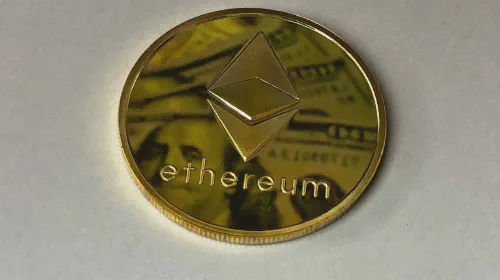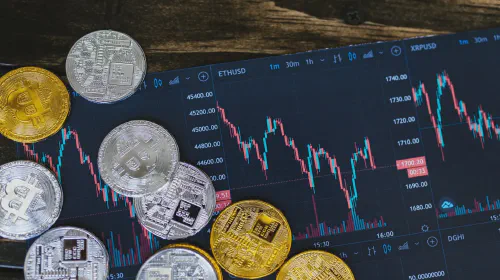Digital Payments: Reducing Friction in Transactions
Salomon Kisters
Jun 15, 2023This post may contain affiliate links. If you use these links to buy something we may earn a commission. Thanks!
The digital age has brought about numerous changes in the way we conduct transactions. Traditional payment methods such as cash and checks are quickly being replaced by digital payments as customers demand faster, more convenient ways to pay.
With digital payments, transactions can be completed quickly and efficiently, reducing the friction that has long been associated with traditional payment methods. Digital payments have also made it easier for businesses to process payments, reducing the time and labor involved in traditional payment methods.
In this blog post, we will explore the benefits of digital payments and how they are reducing the friction in transactions for both consumers and businesses alike.
The Rise of Digital Payments
Digital payments have been on the rise for quite some time now. The increasing use of smartphones, internet access, and the growth of e-commerce have all contributed to the adoption of digital payments. In addition, the COVID-19 pandemic has accelerated the shift to digital payments, as more people are opting for contactless payment methods to avoid a physical exchange of currency.
The adoption of digital payments has brought about numerous benefits, including increased convenience and accessibility. Customers can now make payments from anywhere and at any time, without the need for physical cash or checks. This has not only made the payment process faster but also more secure.
Businesses have also benefited from the adoption of digital payments. By accepting digital payments, they can expand their customer base and reach a wider audience. In addition, digital payments have reduced the time and cost involved in handling cash and checks. This has not only increased efficiency but also improved the accuracy and transparency of payment processing.
Benefits of Digital Payments
Digital payments offer several advantages over traditional payment methods. One of the most significant benefits is the convenience they provide. Unlike traditional payment methods such as cash or checks, digital payments allow customers to make transactions from the comfort of their homes or on the go. This eliminates the need to physically visit a bank or an ATM, making the payment process faster and more convenient.
Another advantage of digital payments is the security they offer. Unlike cash, which can be lost or stolen, digital payments are protected by advanced encryption and security measures, making them less vulnerable to fraud or theft. In addition, digital payment systems record each transaction, providing a transparent and traceable payment trail.
Digital payments are also more cost-effective and time-efficient than traditional payment methods. For businesses, digital payments eliminate the need for manual processing, freeing up valuable time and resources. This not only reduces the risk of payment errors but also saves money on paperwork and storage costs.
Also, digital payments offer greater flexibility and customization than traditional payment methods. Digital payment systems allow businesses to customize payment options to their customers’ needs, including recurring payments, installment payments, and payment plans. This level of flexibility makes it easier for businesses to provide their customers with personalized payment options.
Addressing Security Concerns
While digital payments offer many advantages over traditional payment methods, security concerns remain a significant issue for both businesses and customers. As more transactions are completed online, cybercriminals are becoming more adept at exploiting vulnerabilities in digital payment systems. This has led to an increase in identity theft, data breaches, and other forms of financial fraud.
To address these concerns, digital payment providers have implemented a range of security measures to safeguard transactions. One of the most important is the use of encryption, which scrambles sensitive data to prevent unauthorized access. Most digital payment systems also require customers to create secure passwords or use biometric authentication methods, such as fingerprints or facial recognition, to provide an additional layer of security.
To further enhance their security, businesses should use reputable digital payment providers that have a proven track record of protecting their client’s financial data. They should also implement robust fraud detection and prevention measures, such as real-time transaction monitoring and identity verification tools, to quickly identify and respond to any suspicious activity.
Customers can also take steps to protect their personal and financial information when making digital payments. This includes using strong passwords, keeping their devices and software up-to-date, and avoiding unsecured Wi-Fi networks when making transactions.
The Impact on Consumer Behaviour
The rise of digital payments has had a significant impact on consumer behavior. With the ability to make purchases with just a few clicks on their devices, consumers have come to expect a seamless and convenient payment experience. This has led to a shift in their purchasing patterns, with more people opting to shop online rather than in brick-and-mortar stores.
In addition, the speed and ease of digital payments have also made impulse buying more common. With the ability to make purchases instantly, consumers are more likely to make unplanned purchases when browsing online stores.
Digital payments have also led to an increase in mobile payments. With the widespread use of smartphones, consumers are now able to make purchases even when they are on the go. This has led to a rise in mobile commerce, with businesses needing to adapt to ensure that their websites are mobile-friendly and that the payment process is easy and secure on mobile devices.
The use of digital payments has also given rise to new business models, such as subscription-based services and on-demand delivery. With the ability to automatically charge a customer’s account for recurring payments, businesses can offer services such as streaming video and music, online storage, and other digital services. On-demand delivery services, such as food and grocery delivery, have also gained popularity as consumers look for ways to save time and avoid crowds.
The Future of Digital Payments
As technology continues to advance, digital payments are poised to become even more popular in the years to come. One area that is seeing significant growth is the use of digital wallets, which allow consumers to store their payment information securely and easily access it when making purchases. This technology is becoming increasingly integrated into mobile devices, making it even more convenient for consumers to use.
Another trend that is emerging is the use of biometric authentication for digital payments. With the widespread use of fingerprint sensors and facial recognition technology, these methods offer a more secure and frictionless way for consumers to authorize transactions. This could potentially eliminate the need for passwords or PINs, further simplifying the payment process.
Blockchain technology is also being explored as a way to improve digital payments. With its ability to provide secure and transparent transactions, it could potentially eliminate the need for intermediaries like banks and payment processors, reducing costs and speeding up the payment process.
Finally, the Internet of Things (IoT) is expected to have a major impact on digital payments. With the increasing number of connected devices in our homes and workplaces, it will become even more important for digital payments to be integrated into these devices seamlessly. This could enable new payment use cases, such as automatically ordering groceries when supplies run low or paying for shared services like transportation or entertainment.
Conclusion
The world of digital payments is rapidly evolving, and with each passing day, we are moving closer to a world where every transaction is frictionless. The use of biometric authentication, blockchain technology and IoT is creating new possibilities for merchants and consumers alike, making it easier than ever before to make and accept payments online.
As we look to the future, it’s clear that digital payments will continue to play an increasingly important role in our lives. With the rising popularity of mobile devices and digital wallets, consumers are becoming more comfortable with the idea of making online payments.
With a focus on creating a world without friction, payment providers are working tirelessly to improve the payment experience. The goal is to create a seamless, secure and efficient payment experience that allows us to focus on what really matters – our daily lives, our businesses, and our families!
Stay informed with the latest insights in Crypto, Blockchain, and Cyber-Security! Subscribe to our newsletter now to receive exclusive updates, expert analyses, and current developments directly to your inbox. Don't miss the opportunity to expand your knowledge and stay up-to-date.
Love what you're reading? Subscribe for top stories in Crypto, Blockchain, and Cyber-Security. Stay informed with exclusive updates.
Please note that the Content may have been generated with the Help of AI. The editorial content of OriginStamp AG does not constitute a recommendation for investment or purchase advice. In principle, an investment can also lead to a total loss. Therefore, please seek advice before making an investment decision.

7 Reasons Why Ethereum Is Different From Bitcoin
In this article, we’ll look at the differences between Ethereum and Bitcoin and see where Ethereum improved upon its blockchain technology by learning from its predecessor.

How Many Binance Coins Are There and How Many Are Left?
BNB has managed to become the third-most-popular crypto token in the world. But how many Binance coins are there, and how many are left?

Streamlining Supply Chains with Digital Payments
Discover how digital payments are revolutionizing supply chains. Streamline your business processes, reduce errors, and improve efficiency. Read our blog post now.
Protect your documents
Your gateway to unforgeable data. Imprint the authenticity of your information with our blockchain timestamp